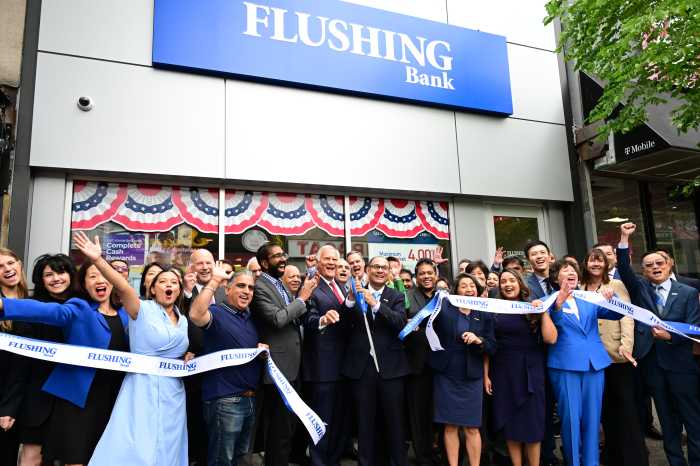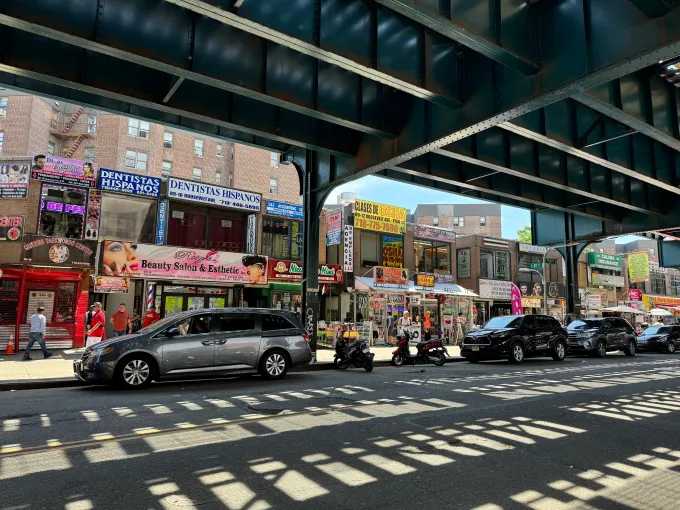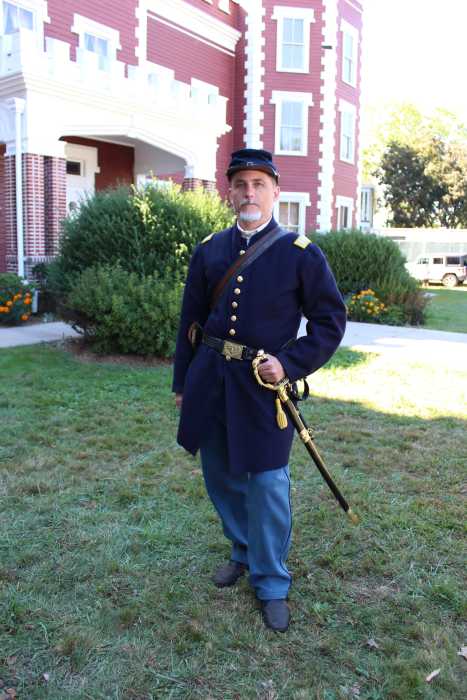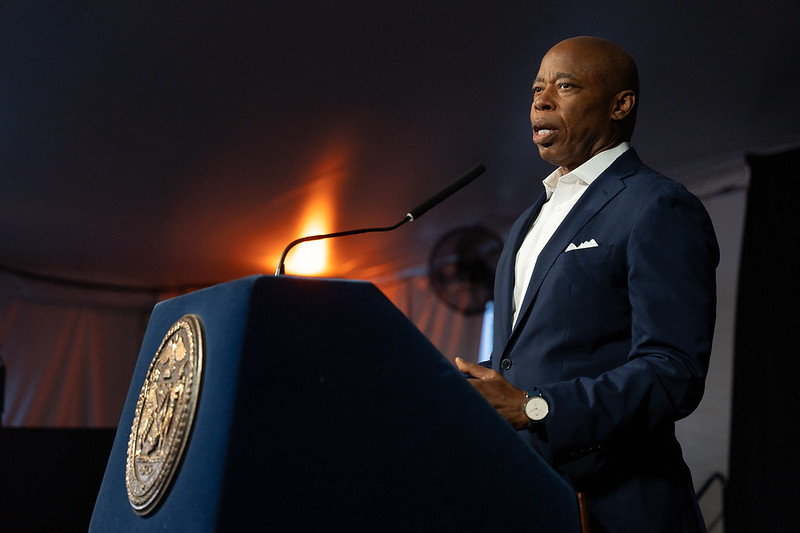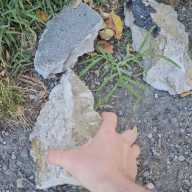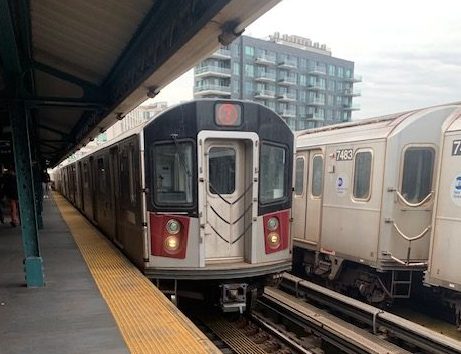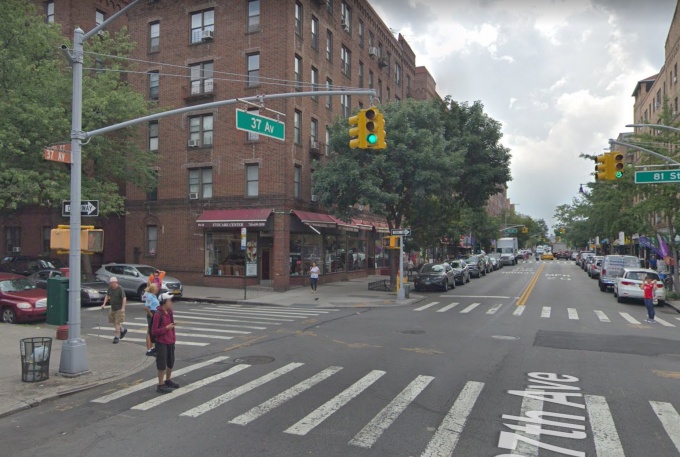
37th Avenue and 81st Street, where a pedestrian was killed on New Year’s Eve in 2018. The DOT listed the avenue, from Woodside Avenue to 114th Street, as a priority location for safety improvements. (Google Maps)
Feb. 19, 2019 By Nathaly Pesantez
The city has unveiled a new Vision Zero plan highlighting the next batch of streets and intersections deemed dangerous across the boroughs that will see enhanced safety measures—with a long avenue running between Jackson Heights and Woodside among the targeted locations.
The Department of Transportation, in its updated Borough Pedestrian Safety Action Plan released today, listed the length of 37th Avenue between Woodside Avenue and 114th Street as a new “priority location” for a lineup of safety treatments and critical upgrades, given alarming crash data recorded through the stretch in recent years.
The 3.1-mile corridor, according to the DOT, saw 16 pedestrians killed or severely injured (KSI) from 2012 to 2016. The figure translates to a KSI rate of 5.2 pedestrians per mile for the four-year period, a 33 percent uptick from the prior 3.9 KSI figure per mile on the same length from 2009 to 2013.
The near 60-block stretch is among five new corridors in Queens the DOT will focus on improving, among 30 already on its list. The updated plan for the borough, however, has also dropped 17 corridors.
The 37th Avenue corridor, additionally, is part of 424 miles of targeted corridors across the five boroughs in the new plan that, despite making up 7 percent of the city’s streets, are responsible for 48 percent of total pedestrian fatalities.
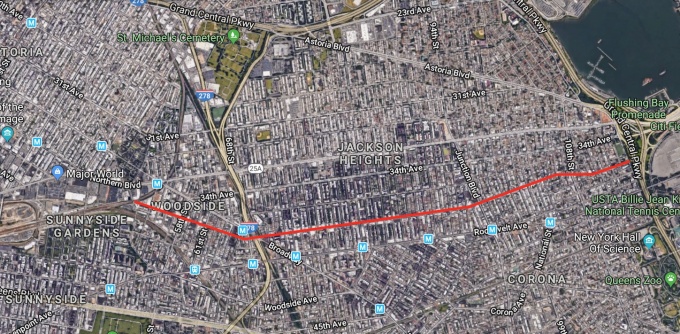
37th Avenue from Woodside Avenue to 114th Street in red. (Google Maps)
“In these updated plans, we have used the freshest data to identify new crash-prone corridors and intersections most in need of our full menu of safety interventions,” said Polly Trottenberg, DOT Commissioner, in a statement.
As part of the updated plans, “every feasible intersection” at 37th Avenue and other new priority corridors will have Leading Pedestrian Interval signals installed, which show walk signs for pedestrians before showing a green light to vehicles, by the end of 2019.
Signal timing through the avenue and other priority spots citywide will also be adjusted to reduce speeding by the end of the year.
Other efforts include a mix of engineering, education and data gathering initiatives, like launching a high visibility enforcement program on priority corridors; conducting a study of senior pedestrian injuries; tracking violations at priority corridors and other hot spots; and addressing issues with vehicles crossing sidewalks to access driveways.
The lineup of initiatives, save for the LPIs and changes to signal timing that are anticipated to wrap up by the end of this year, will be implemented over the course of three years.
The DOT’s updated plans also include a large list of priority intersections, with about 70 selected in Queens. The majority of the intersections in the borough, however, have already been the focus of the agency, with only a handful added.
The changes to 37th Avenue, while stemming from data collected up to 2016, also come after a recent string of incidents on the avenue.
A pedestrian was killed, for example, on New Year’s Eve at 81st Street after a driver, who carried a suspended license, struck her while making a turn. The driver then drove over the victim twice.
In April, a 13-year-old suffered a leg injury after he was struck by an SUV while crossing at 101 Street at the avenue in Corona.
In 2017, a 67-year-old man was killed while crossing the avenue on 76th Street by an Uber driver, who was also turning.
While 37th Avenue is a new focus for the DOT, the agency is still keeping a close watch on more than two dozen corridors in Queens that are still in need of more safety improvements, including Northern Boulevard, Roosevelt Avenue and Queens Boulevard.
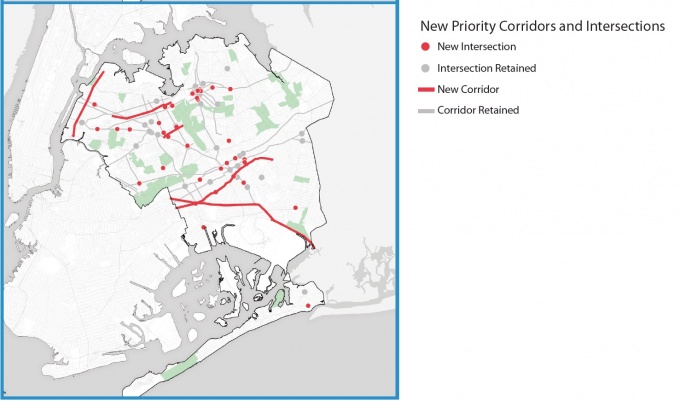
via DOT

